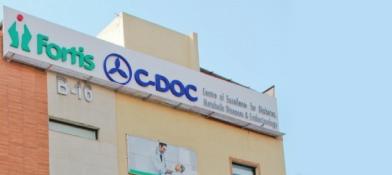Botox injections
Botox, which derives from the microorganism Clostridium botulinum, is a common medicine for dermatology and ophthalmology. This content aims to provide an overview on Botox injection, a therapy used for aesthetic treatment, along with details on its mechanism of action, side effects, and safety of the therapy.
Mechanism of Action:
Botox acts by three main mechanisms: binding, internalization and translocation followed by blocking. Here is the detailed explanation.
Botox binds specific receptors at the surface of presynaptic cells and targets them for action.
Following binding, Botox will be taken up by presynaptic cells through an energy-dependent receptor-mediated endocytic process. In this process, the plasma membrane forms a vesicle surrounding the Botox-receptor complex.
Botox translocate across the vesicle endosomal membrane, mediated by the reduction of a disulfide bond, allowing the release of the 50-kDa light chain of the toxin into the presynaptic cell cytoplasm.
Inside the cytoplasm, the light chain of Botox, especially serotypes A and E, works by cleaving a cytoplasmic protein called SNAP-25. By cleaving SNAP-25, Botox prevents the release of acetylcholine, a neurotransmitter responsible for muscle contraction.
Muscle relaxation: With the inhibition of the release of acetylcholine by Botox, there is a relaxation of the local muscles in the injected area which is subjective to conditions. For example, the process of muscle relaxation reduces facial wrinkles caused by constant contractions of the muscles and activity in that specific anatomic location.
Botox Injections Indications
Forehead creases: Botox can help smooth out horizontal lines and wrinkles that appear on the forehead due to repetitive muscle movements.
Glabellar frown lines: Botox injections are mostly used for the reduction of vertical lines between the eyebrows, which are also called glabellar frown lines or "11" lines.
Crow's feet: Botox injections can effectively diminish the fine lines and wrinkles that predominantly appear on the outer corners of the eyes, known as crow's feet.
Mouth wrinkles: Botox injections can diminish the appearance of mouth wrinkles around the mouth, commonly called smoker's lines.
Neck and chest wrinkles: Botox injections may be utilized to improve the appearance of horizontal lines and wrinkles on the neck and chest area.
Nasolabial folds: Botox can be used to reduce the depth and appearance of the creases that extend from the nose sides to the corners of the mouth, known as nasolabial folds.
Eyebrow elevation: To strategically elevate the eyebrows, providing a more youthful and lifted appearance.
Lichen simplex, pompholyx, and acne vulgaris: Botox injections may be employed as part of the treatment plan for certain dermatological conditions like lichen simplex (chronic itching and scratching), pompholyx (blistering of the hands and feet), and acne vulgaris (acne).
Hyperhidrosis: Botox is an effective treatment for excessive sweating (hyperhidrosis) in various areas of the body, such as the underarms, palms, and soles of the feet.
Considerations and Contraindications for Botox
Neurological conditions: People with neurological disorders such as myasthenia gravis, amyotrophic lateral sclerosis, multiple sclerosis, or Eaton Lambert syndrome should not have Botox injections as it can affect their neuromuscular function and make them more prone to its side effects.
Pregnancy and breastfeeding: Botox injections are not recommended while expecting a baby or when breastfeeding. Establishment of the effects on the developing fetus or nursing infant is yet to be established. However, the most imperative thing is to consider the safety of both the mother and the child during these periods.
Neonates and children: Because there is little evidence concerning its safety in this age group, Botox is generally not recommended for use in neonates and children. Firstly, the potential risks versus benefits to be assessed prior to considering Botox treatment in pediatric patients.
People allergic to Botox: Stay away from Botox if one is allergic to it or any other substance that constitutes a similar component to Botox. Individuals with allergies can have mild irritations on their skin whereas some develop severe reactions all over their body hence it requires caution.
Previous operations on the lower eyelids: Having operated on the lower eyelids before can lead to complications caused by administering Botox treatments within their periphery. Thus, close examination and consultation by health professionals need to be done to verify whether Botox is appropriate for such patients.
Localized/systemic infections: In case there are focal or systemic infections present at the site of the intended treatment, avoid injecting Botox therein. Such an infection increases the possibility of complications, hence hindering the healing process.
Clinical Effects of Botox:
Time of appearance and longevity: Clinical success with Botox occurs from the first to the fourth day after the procedure. The maximal effect can generally be seen in the period from the first to the fourth weeks, while the duration is from three to four months.
To lengthen the effect up to the date of the next treatment, repeat treatments may be needed. The typical time for these demands is from every 6 months to once a year. Because of muscle arrangement differences among people, the time for the application of Botox may be different and it generally ranges from 3 to 4 months.
Safety of Botox:
Margins of safety: When applied in human beings, Botox displays a wide margin of safety while its lethal dose 50% (LD50) is about 40 U/kg body weight. This is one of the reasons why it is useful in facial cosmetic procedures.
Unchanged by persistent signs: Nerves terminals and targeted muscles don’t get changed by Botox after treatment. These facts are unquestionable and demonstrate the increased level of security and the decreased possibility for side effects from the use of Botox in the field of dermatology.
Side Effects of Botox:
Site Reactions: The potential side effects of a Botox treatment may include bleeding, swelling, erythema (redness), and pain at the injection sites. Thinner needles and dilution with saline reduce these side effects, and studies have shown to be promising.
Headaches: While headaches usually occur following the procedure they tend to go away within a period of 2 to 4 weeks. This side effect may be cured using systemic analgesics, if applicable.
Other side effects: Some of them include malaise, nausea, flu-like symptoms, and ptosis (drooping of the upper eyelids). Such effects are more common when injected to glabellar area and can be managed with alpha-adrenergic agonist eye drops according to research.
Conclusion:
Treatment with Botox injections is generally considered a safe and effective procedure under the category of Plastic and Reconstructive Surgery. However, it is important to seek professional advice from a qualified health professional for evaluation of suitability and for a discussion of potential risks and benefits before receiving Botox treatment.
Popular Searches :
Hospitals: Cancer Hospital in Delhi | Best Heart Hospital in Delhi | Hospital in Amritsar | Hospital in Ludhiana | Hospitals in Mohali | Hospital in Faridabad | Hospitals in Gurgaon | Best Hospital in Jaipur | Hospitals in Greater Noida | Hospitals in Noida | Best Kidney Hospital in Kolkata | Best Hospital in Kolkata | Hospitals in Rajajinagar Bangalore | Hospitals in Richmond Road Bangalore | Hospitals in Nagarbhavi Bangalore | Hospital in Kalyan West | Hospitals in Mulund | Best Hospital in India | | Cardiology Hospital in India | Best Cancer Hospital in India | Best Cardiology Hospital in India | Best Oncology Hospital In India | Best Cancer Hospital in Delhi | Best Liver Transplant Hospital in India
Doctors: Dr. Rana Patir | Dr. Rajesh Benny | Dr. Rahul Bhargava | Dr. Jayant Arora | Dr. Anoop Misra | Dr. Manu Tiwari | Dr. Praveer Agarwal | Dr. Arup Ratan Dutta | Dr. Meenakshi Ahuja | Dr. Anoop Jhurani | Dr. Shivaji Basu | Dr. Subhash Jangid | Dr. Atul Mathur | Dr. Gurinder Bedi | Dr. Monika Wadhawan | Dr. Debasis Datta | Dr. Shrinivas Narayan | Dr. Praveen Gupta | Dr. Nitin Jha | Dr. Raghu Nagaraj | Dr. Ashok Seth | Dr. Sandeep Vaishya | Dr. Atul Mishra | Dr. Z S Meharwal | Dr. Ajay Bhalla | Dr. Atul Kumar Mittal | Dr. Arvind Kumar Khurana | Dr. Narayan Hulse | Dr. Samir Parikh | Dr. Amit Javed | Dr. Narayan Banerjee | Dr. Bimlesh Dhar Pandey | Dr. Arghya Chattopadhyay | Dr. G.R. Vijay Kumar | Dr Ashok Gupta | Dr. Gourdas Choudhuri | Dr. Sushrut Singh | Dr. N.C. Krishnamani | Dr. Atampreet Singh | Dr. Vivek Jawali | Dr. Sanjeev Gulati | Dr. Amite Pankaj Aggarwal | Dr. Ajay Kaul | Dr. Sunita Varma | Dr. Manoj Kumar Goel | Dr. R Muralidharan | Dr. Sushmita Roychowdhury | Dr. T.S. MAHANT | Dr. UDIPTA RAY | Dr. Aparna Jaswal | Dr. Ravul Jindal | Dr. Savyasachi Saxena | Dr. Ajay Kumar Kriplani | Dr. Nitesh Rohatgi | Dr. Anupam Jindal
Specialties: Heart Lung Transplant | Orthopedic | Cardiology Interventional | Obstetrics & Gynaecology | Onco Radiation | Neurosurgery | Interventional Cardiology | Gastroenterologist in Jaipur | Neuro Physician | Gynecologist in Kolkata | Best Neurologist in India | Liver Transfer | Best Cardiologist in Delhi



























